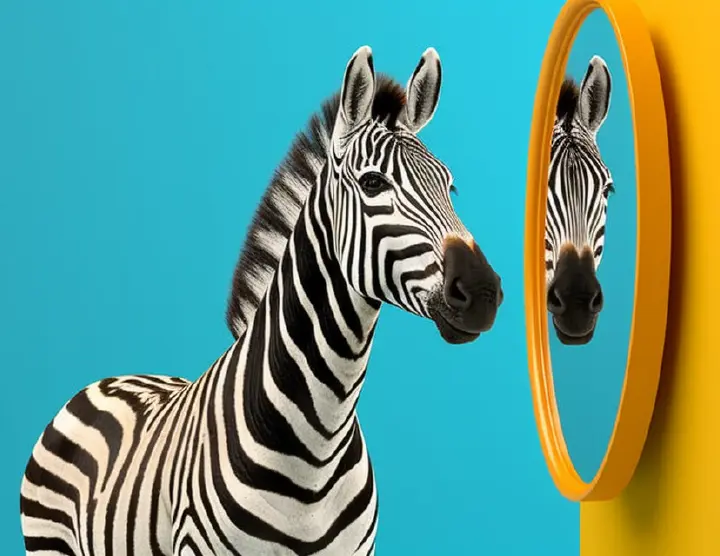Data-driven coaching: what to share, what not to share
Executive coaching has experienced exponential growth globally in recent years, focused on helping individuals in influential positions to grow their self-awareness. This growth has resulted in companies and individuals engaging in coaching journeys, seeking ways to add value, accelerate progress and deepen the engagement.
Along the way the field of coaching has begun to draw more and more on data, using assessments and 360-feedback instruments to bring additional information into coaching sessions. Leaders and managers today are asked to make an impact in a wide range of areas, including both tangible and intangible contributions. They must motivate, encourage, clarify and role model, to name just a few of the areas in which they are expected to excel. Many of these leaders, therefore, feel stretched and struggle to prioritise. Good feedback data can powerfully support them in filtering and prioritising all these various aspects, to focus their energy where it will make the most difference.
Without some form of assessment or external data to springboard the coaching process, the coach typically does not have prior experience of or direct contact with their client in the workplace. This means that the information in the coaching session is limited to whatever the client is consciously aware of and willing to share. The intention of bringing data into coaching is to connect the coach to the client's linked context, to grow self-awareness by exposing the client to information about how others might perceive them, and to offer a starting point for exploration between the coach and client.
The Coaching Companion (CC) is the most valuable tool in the iEQ9 accredited practitioner's toolkit as it summarises all the data in a client's iEQ9 assessment. It is a tool for the coach to review and gain an overview of the client's profile and to check for reliability issues or concerns.
The first page of the Coaching Companion summarises all data from the individual's test, including scores for possibilities that were eliminated by our iEQ9 questionnaire. The second page contains data relating to the client's Integration profile, as well as statistics and comments related to the reliability, consistency and validity of the answers given. This information can be challenging for clients to accurately interpret and is not designed to be shared with clients.
Some clients are hungry for data and will ask coaches to show them all the information or data they have available, including the Coaching Companion (CC). For example, Enneagram Fives are particularly interested in information and are likely to want to access all the data available to the coach, and then to be given time to process their test results before commenting.
One way to respond would be to give in to this request and share the full data set with the Enneagram Five. However, we know that going along with our clients' comfort zone is not always the most helpful contribution we could make as a coach. The risk comes from the fact that sharing the data will not necessarily satisfy the Enneagram Five, but may rather activate their fixation and offer them an escape from the deeper, simpler reflections.
What are the issues with sharing data with clients?
There are a number of reasons why we advise against sharing too much data with coaching clients, all of which relate to ways in which too much data can actually compromise the depth and client experience of the coaching process. These factors include:
Information overload: The iEQ9 assessment creates a rich, complex data set that can be mined and applied in many different ways. This is one of the reasons our products are often useful to support long-term, complex development journeys; the fractal layers of the Enneagram and the rich data collected by the iEQ9 mean that our reports typically have enough data and information to coach for years. This also means, however, that this is far too much information and data to 'dump' on a client at their very first point of contact with the Enneagram and their own personal assessment results. The full Coaching Companion data, in particular, represents potential information overload for anyone who does not have a deep understanding of the Integrative Enneagram.
For example: Clients who are walked through all the various constructs of the iEQ9 in one session, without adequate time to process and layer their understanding, often struggle to even remember what Core Type they were a week later. Conversely, we find it very effective to start with Core Type and gradually reveal additional data as it is elicited by the client's reflections and questions.
Diagnosis vs Self-Discovery: The correct way to approach data feedback is to frame 'this is what the data suggests' rather than using the data to 'tell' clients who they are. Our purpose here is to invite clients onto a journey of self-discovery, not to diagnose them. When working with any kind of assessment or data, it is important to remember that 'the map is not the territory'. In other words, it is important to remember that the data is only a 'map' of the person; the real, complex human being is sitting in front of you. Over-emphasising the data can result in us seemingly 'forcing' a Type on someone, and potentially creating resistance as a result. An overly data-driven focus can also prevent you from exploring the more important content of the debrief session, which is how these factors are showing up in the client's life.
For example: An Enneagram Nine might experience significant anxiety about coaching as many Nines are not comfortable talking about or focusing on themselves. The Nine is quite likely to feel overwhelmed initially and experience information overload if a coach shares the full Coaching Companion with them in their first session, along with possibly feeling that they have been reduced to graphs on a page and exposed or underestimated. In response to this confusion, some Nines may go into passive receiver mode and patiently allow the coach to 'tell them who they are' - but in doing so they avoid true engagement in the process, self-forgetting and not 'checking the results out' for themselves.
Avoidance and 'escape hatches': As the Enneagram speaks to motivation and drivers at a deeply revealing and personal level, it has a profound impact; receiving their iEQ9 profiles can be daunting for some individuals. Many clients may initially resist engaging with their Core Type as this often has an 'eek factor' that puts people off. Introducing other information (such as other Types that were close to the dominant Type) through the Coaching Companion may offer a welcome distraction that gives the client something else to focus on, allowing them to escape the hard work of working on their core.
For example: An Enneagram Six who is uncomfortable with their Core Type might see the graphic and jump to the Center-specific styles, wanting to focus on increasing their Action Center and making their action style more assertive as they see an inability to act as "my real problem". However, this might prevent them from truly reflecting on their reactions and feelings, avoiding the deep fear and anxiety that underpins their reluctance to act. This superficial development without awareness is unlikely to achieve sustainable results. Similarly, to continue the example above, the Enneagram Five might latch onto analysing and calculating the ratios and totals of the various different data sets in the Coaching Companion as a way of avoiding the difficulty of confronting the shadow highlighted in their core results.
Guidelines on sharing data with clients
What, then, should coaches bear in mind when sharing iEQ9 results and data with their clients?
The iEQ9 Coaching Companion is provided to our iEQ9 Accredited Practitioners as a summary of all the data in the client's iEQ9 assessment. The document is designed so that experienced coaches can get an overview of a client's profile and to check for reliability issues, and should not be shared with clients, especially not in a first session. Integrative Enneagram Solutions also recommend that coaches only send clients their first ten pages of their full iEQ9 Report for the first session, to enable focus and avoid clients getting lost in the data.
Focus on the Core Type and Subtype in your first sessions with clients, which is where up to 80% of the work is for most of our clients who are encountering the Enneagram for the first time. Before clients begin exploring other styles or points on the Enneagram, however, they need to spend time coming to terms with the messages around their Core Type and identify their key development needs. Other Types and information may then be helpful to guide their development of these gaps.
Remember that you are familiar with the Enneagram and you receive the client's data ahead of time. For many clients, however, the feedback session is the first time they are able to explore this information and they may be trying to learn the Enneagram, their own Type and the process of coaching all at once. Keep it simple, respect the pace of your client's learning, and trust that you can share more in later sessions.
Concluding thoughts...
Once clients have done sufficient work on the basics of landing in their Type and Subtype after a number of coaching sessions, there may be times when sharing some of the patterns and additional big-picture data from the Coaching Companion may be helpful and useful, but this strategy should be handled with care. We encourage coaches to engage with clients conversationally rather than relying on the data to drive the process.
Get data driven coaching Get your iEQ9 Report

 What is the Enneagram?
What is the Enneagram?
 Introduction to the 27 Subtypes
Introduction to the 27 Subtypes
 Introduction to the 3 Centers
Introduction to the 3 Centers
 Wings
Wings
 Lines and Integration
Lines and Integration
 Enneagram History & Origin
Enneagram History & Origin
 Enneagram for Myself
Enneagram for Myself
 Enneagram for Practitioners
Enneagram for Practitioners
 Enneagram for Business
Enneagram for Business
 iEQ9 Individual Reports
iEQ9 Individual Reports
 iEQ9 Team Reports
iEQ9 Team Reports
 iEQ9 Questionnaire
iEQ9 Questionnaire
 Training Events
Training Events
 Level 1 iEQ9 Accreditation
Level 1 iEQ9 Accreditation
 Level 2 Enneagram Team Dynamics
Level 2 Enneagram Team Dynamics
 International Enneagram Conference
International Enneagram Conference
 iEQ9 Community of Practice Events
iEQ9 Community of Practice Events
 About Integrative9
About Integrative9
 Meet the Faculty
Meet the Faculty
 Testimonials
Testimonials
 Contact Us
Contact Us




